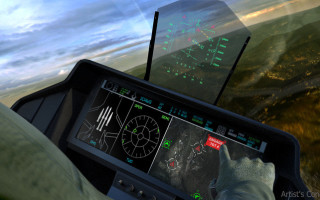Flight test demos semi-autonomous software in contested environments
NewsFebruary 13, 2018

ARLINGTON, Va. The U.S. Defense Advanced Research Projects Agency (DARPA), in association with the U.S. Air Force Research Laboratory (AFRL), completed a 11-day flight test with BAE Systems' newly developed semi-autonomous software that allows better management and control of air-to-air and air-to-ground combat in contested environments.
BAE Systems developed the software for the Agency's Distributed Battle Management (DBM) program. During the flight test, DARPA and AFRL engineers were able to demonstrate capabilities for its DBM program for the first time during seven live flights that included a mix of live and simulation runs and simulation-only runs.
The test included BAE Systems' Anti-Access Real-time Mission Management System (ARMS) and the Contested Network Environment Situational Understanding System (CONSENSUS). ARMS, a distributed adaptive planning and control software, provides near real-time mission capabilities that allow warfighters to engage air-to-air and air-to-ground targets and search airspace. CONSENSUS is a distributed situational understanding software that provides pilots and operators with weapon targeting guidance and mission awareness through a common operational picture by fusing raw data from multiple platforms and sensors.
BAE Systems' automated, on-board software enhances mission effectiveness by providing warfighters with shared situational understanding, interchangeable roles, coordinated objectives for teams of manned and unmanned aerial vehicles (UAVs) in communications denied environments, and compressed, prioritized data transfer when communications are available.
“The lack of automated decision aids severely hinders operators and pilots from making critical decisions with limited communications so they can adapt to combat scenarios,” says David Hiltz, director of the Planning and Control Technologies Directorate at BAE Systems. “Our DBM software delivers these automated decision aids that provide mission execution options and the ability to maintain a consistent mission representation and status across all platforms, which allows warfighters to make better, faster combat decisions to ensure mission safety and completion.”









